Table Of Contents
Aniline leather is celebrated for its luxurious softness and natural beauty, making it a favored choice for sofas, showcasing its vibrant colors and full-grain quality.
This material stands out from other types of leather, including nubuck and suede, with its unique characteristics.
We explore how to properly care for aniline leather sofas, common leather stains you might encounter, and effective leather restoration techniques.
You'll also find tips on protecting your investment with stain protection to ensure it remains stunning for years to come.
Whether you’re a new owner or looking to maintain your existing sofa, this guide has you covered with leather care tips and maintenance routines.
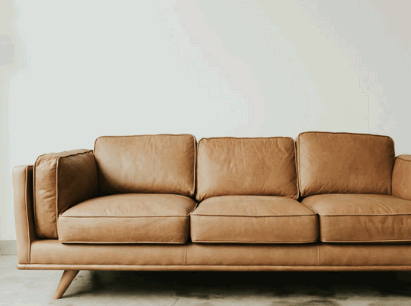
What Is Aniline Leather?
Aniline leather is a premium type of leather known for its softness, unique character, and vibrant colors, often achieved through an intricate dye process that retains the natural markings and grain of the hide, making it a favored choice in leather upholstery. This full-grain leather undergoes minimal processing, making it sensitive to moisture and stains, which requires careful leather maintenance and attention to leather sensitivity. With its luxurious appearance and feel, aniline leather develops a beautiful patina over time, enhancing its aesthetic appeal and making it a preferred choice for high-end leather products, including furniture care and upholstery.
Delve into: How To Care For Stressless Leather Furniture
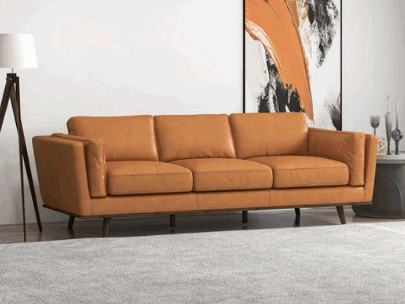
Why Is Aniline Leather Sofa Special?
Aniline leather sofas are special due to their characteristic softness and natural beauty, offering a luxurious seating experience that is unmatched by other types of leather, thanks to their unique leather types. Each piece is unique, showcasing the exquisite grain, texture of the hide, and its leather finish, which adds depth and warmth to any interior. This premium quality leather not only enhances the aesthetic appeal of furniture but also requires a dedicated leather care routine, including regular cleaning and leather conditioner application, to ensure longevity and preserve its rich appearance, making it an investment for discerning homeowners.
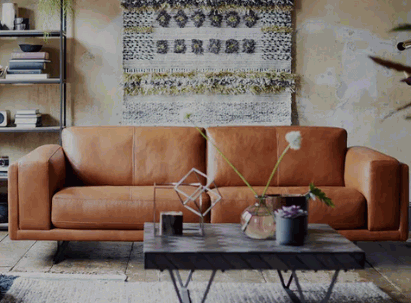
What Is The Difference Between Aniline Leather And Other Types Of Leather?
The main difference between aniline leather and other types of leather, such as nubuck and suede, lies in the dye process and level of treatment each undergoes, affecting their respective leather absorbency and sensitivity. Aniline leather is dyed with soluble dyes, retaining the natural surface of the hide, while nubuck is sanded to create a soft, velvety texture, and suede is made from the underside of the hide, giving it a different feel and look, leading to varied leather cleaning methods. Aniline leather is more sensitive to spills and stains, requiring specialized cleaning of leather products and care to maintain its appearance.
This distinction is pivotal when considering durability and wear over time.
- Aniline leather showcases a rich color and grain that highlights the hide's unique features, making it an elegant choice for high-end items like luxury furniture and accessories.
- Nubuck, on the other hand, offers a brushed finish, which provides a more rugged look suitable for casual apparel and footwear.
- Suede, known for its softness, is often reserved for fashion items, yet it tends to be the least resistant to water and stains.
In terms of maintenance, aniline leather requires gentle cleaning with specialized leather cleaning products, while nubuck can benefit from a softer brush due to its texture, and suede often needs a protective spray followed by careful spot cleaning to avoid damage, ensuring proper leather preservation.
Understanding these nuances, including the unique characteristics of aniline leather, can significantly influence one's choice based on lifestyle and usage.
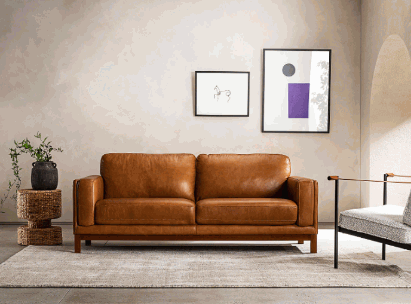
How To Care For Aniline Leather Sofa?
Caring for an aniline leather sofa is essential to preserve its beauty and extend its lifespan, and it involves a consistent leather care routine that includes regular cleaning, leather conditioning, and protection against stains. Because aniline leather is sensitive to moisture and spills, it's crucial to use the right leather cleaning products specifically designed for this type of leather, incorporating appropriate leather cleaner tips. Additionally, applying a high-quality leather conditioner can help nourish and protect the surface, preventing it from drying out and maintaining its natural sheen over time, contributing to leather maintenance and preservation.
Regular Dusting And Vacuuming
Regular dusting and vacuuming are vital components of leather care, helping to remove debris and dust that can accumulate on the surface of aniline leather sofas and potentially cause scratches or damage, ensuring the care of leather upholstery. Using a soft leather cleaning brush can effectively lift dirt without harming the delicate finish of the leather, while a vacuum with a suitable attachment can reach crevices and maintain the overall cleanliness of the upholstery, thereby enhancing leather preservation. This proactive approach ensures that your conditioned leather remains pristine and vibrant, avoiding issues associated with neglect and promoting leather safety.
Maintaining the beauty of aniline leather requires attention to detail, the right tools, and effective leather techniques.
Here are some best practices to follow for leather maintenance:
- Choose the Right Tools: Invest in microfiber cloths and soft-bristled brushes to gently remove dust and protect your leather finish.
- Avoid Harsh Chemicals: Stay away from bleach or ammonia-based cleaners, as they can damage the leather, compromising your leather upholstery care.
- Use a Vacuum with a Brush Attachment: This technique allows for effective cleaning in tight spaces without risking scratches, ensuring thorough leather cleaning.
- Regular Conditioning: Every few months, apply a conditioner designed for aniline leather to keep it hydrated and prolong its leather patina.
By adhering to these recommendations, you can ensure the longevity and aesthetic appeal of your leather upholstery, making it a cherished part of your home while enjoying its leather beauty.
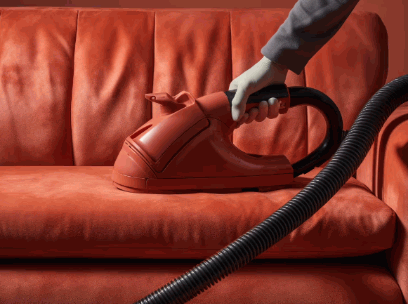
Cleaning Spills Immediately
Cleaning spills immediately is crucial for maintaining the integrity of aniline leather, which is more sensitive to liquids than other leather types, particularly due to its unique leather types. When a spill occurs, it’s essential to blot the area with a soft, absorbent cloth or paper towel to soak up excess liquid without rubbing, which could push the stain deeper into the leather, leading to stubborn leather stains. Following this initial step, using a recommended leather cleaning product designed for aniline leather can help safely remove any remaining residue, preventing long-term damage and unsightly leather stains.
To ensure the effective management of spills and maintain leather integrity, one should follow a systematic approach.
- Identify the substance: Different spills require different treatments. For example, oils and water can affect the leather distinctly, necessitating tailored leather cleaning methods.
- Utilize appropriate cleaning agents: Look for products specifically formulated for aniline leather, such as mild pH-balanced cleaners and conditioners that nourish the leather while removing stains, enhancing leather preservation.
- Research reputable brands: Products from well-known leather care brands often contain ingredients designed to protect the natural finish and ensure long-lasting durability, contributing to effective leather maintenance.
By adhering to these techniques, individuals can maintain the beauty and longevity of their aniline leather, preventing potentially irreversible damage and preserving its unique texture and leather patina. Remember, regular leather maintenance is key to keeping your leather in pristine condition.
Using A Leather Cleaner
Using a specialized leather cleaner is an effective way to maintain your aniline leather sofa, as it helps to gently remove dirt and oils while preserving the leather's natural finish and enhancing its leather protection. It's important to select a cleaner specifically formulated for aniline leather, as using inappropriate products can lead to discoloration or damage, affecting the overall leather safety. Regular application of a high-quality leather cleaner, as part of your leather care kit, will keep your furniture looking fresh and prolong its lifespan while ensuring comprehensive leather cleaning.
For optimal results, consider the following leather cleaner tips when applying leather cleaning products:
- Always test the cleaner on a hidden area first to ensure compatibility and prevent any leather damage.
- Apply the cleaner using a soft cloth and work in gentle, circular motions to preserve the leather's finish.
- Allow the product to sit for a few minutes before wiping it away to let it penetrate the leather, maximizing its leather cleaning effectiveness.
- Avoid over-saturating the leather to prevent any moisture damage, which can impact the leather's absorbency.
It is recommended to clean aniline leather every 3-6 months, or more frequently if the sofa is subjected to heavy use, to maintain its beauty and ensure proper leather preservation.
Remember, choosing the right leather care products for maintaining your aniline leather is crucial for longevity and appearance.

Avoiding Harsh Chemicals
Avoiding harsh chemicals is crucial in the care of aniline leather, as these substances can damage the sensitive surface and strip away its natural oils and color, impacting leather sensitivity. It's advisable to steer clear of cleaners containing alcohol, ammonia, or any abrasive agents, which can lead to irreversible harm and compromise leather maintenance. Instead, opt for gentle leather cleaning products designed specifically for aniline leather that follow recommended leather care instructions, ensuring that your sofa remains protected and in pristine condition, enhancing its leather beauty.
Along with choosing appropriate cleaning products, understanding the specific needs of aniline leather can further enhance its longevity and leather preservation. Regular maintenance is essential; even a simple dusting with a soft, lint-free cloth can prevent dirt buildup, contributing to effective leather care.
- Consider using a pH-balanced leather conditioner, which helps to replenish oils without compromising the leather's finish, ensuring long-lasting leather care.
- Avoid exposure to direct sunlight, as UV rays can lead to fading and deterioration, impacting the overall leather preservation.
Look for reputable brands that emphasize natural ingredients and eco-friendliness in their formulations, ensuring responsible leather care practices. This transition to safer alternatives not only protects the leather but is also beneficial for the environment, creating a sustainable approach to leather care and promoting eco-friendly leather products.
What Are The Common Stains On Aniline Leather Sofa?
Common stains on aniline leather sofas can range from ink and oil to food and beverage spills, each requiring specific leather stain removal techniques for effective removal. Aniline leather's sensitivity to liquids means that prompt action is key to preventing long-lasting damage; knowing how to approach these stains can help preserve the leather's beautiful appearance and maintain its leather patina. Understanding the nature of these stains and applying the correct leather stain removal methods are essential components of a successful leather care routine, ensuring proper leather maintenance and preservation.
Ink Stains
Ink stains on aniline leather are particularly challenging due to the leather's sensitivity, but with prompt action, they can be managed effectively. To treat an ink stain, first blot the area with a dry cloth to absorb any excess ink without rubbing, which could spread the stain further. Following this, using a specialized leather cleaner designed for sensitive leather can help lift the remaining ink without causing damage to the leather's finish.
When dealing with stubborn ink stains, it’s essential to proceed carefully. Here are some do’s and don’ts to keep in mind:
- Do test any cleaning products on a hidden area first to ensure they won't discolor the leather.
- Do use distilled water to moisten the cloth slightly before gentle dabbing.
- Do consult professional cleaners if the stain persists after several attempts.
- Don't use alcohol-based products as they could harm the leather.
- Don't apply too much pressure while blotting, as this can damage the surface.
Following these steps will not only help with ink stains but also support the overall care of aniline leather.
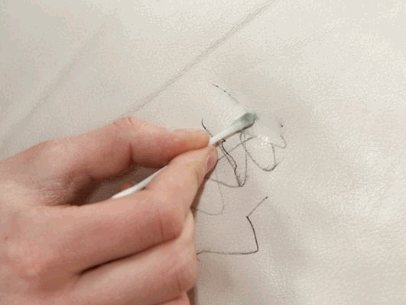
Oil Stains
Oil stains on aniline leather can be particularly troublesome, as the oil can penetrate the leather's surface and lead to darkened patches if left untreated. To address an oil stain, it is important to act quickly by blotting the area with a clean cloth to absorb excess oil without rubbing it in. Following this initial step, applying a leather cleaner specifically formulated for oil stain removal can help lift the stain without harming the leather's sensitivity.
To ensure a more comprehensive approach to leather care, it is advisable to periodically treat aniline leather with a conditioner designed to maintain its softness and resilience. This preventative measure not only provides a barrier against stains but also revitalizes the leather's natural oils. Regular dusting with a soft, dry cloth can further protect the surface from dirt and grime.
- For stubborn stains, consider using a specialized leather stain remover.
- Avoid using excess water as it can damage the material.
- In case of persistent stains, consulting a professional leather cleaner may be beneficial.
By following these strategies, one can prolong the life and appearance of aniline leather, ensuring it remains a treasured piece for years to come.
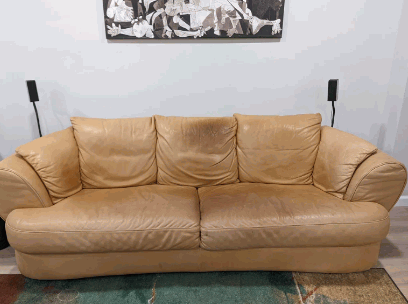
Food And Beverage Stains
Food and beverage stains are common culprits that can mar the appearance of your aniline leather sofa, but with the right approach, they can often be removed without a trace.
It's crucial to clean these spills immediately; start by gently blotting the area with a soft cloth to absorb as much liquid as possible. Next, use a leather cleaner recommended for aniline leather, following the care instructions for best results, to ensure your leather remains unblemished.
Consider these effective strategies:
- Regular Maintenance: Periodically dust your leather with a soft cloth to keep it clean.
- Test Products: Before using any cleaning solution, test it on a hidden area of the leather to avoid discoloration.
- Stain-Specific Treatments: For tougher stains, a mixture of mild soap and water may be applied, but always follow up with a designated leather conditioner to restore moisture.
By implementing these techniques, you can significantly enhance the longevity and appearance of your furniture while effectively tackling any uninvited stains.
Can Aniline Leather Sofa Be Repaired?
Yes, aniline leather sofas can be repaired, and understanding the right techniques for leather repair and restoration is necessary for maintaining their beauty and longevity. Minor scratches and scuffs can often be treated with a leather conditioner or specific restoration products designed for aniline leather. For deeper damage such as tears, professional leather repair services can provide the expertise needed to restore the leather's integrity while ensuring that any repairs blend seamlessly with the original surface.
Minor Scratches And Scuffs
Minor scratches and scuffs on aniline leather can often be minimized with the application of a high-quality leather conditioner, which helps nourish the leather and restore its natural appearance. To treat these imperfections, start by gently cleaning the area with a soft cloth to remove any dust or debris before applying the conditioner liberally. This will not only enhance the leather's shine but also reduce the visibility of minor damage, promoting better leather maintenance in the long run.
When considering leather care, it's essential to choose the right leather conditioner based on the type of leather and its specific needs. There are various options available in the market, such as cream, lotion, and spray conditioners, each offering unique advantages.
- Cream conditioners provide deep nourishment, perfect for older leather.
- Lotion conditioners are lightweight and ideal for regular maintenance, giving a quick refresh.
- Spray conditioners are convenient for on-the-go touch-ups.
To apply the conditioner effectively, smear a small amount onto a clean cloth and gently buff it into the leather in circular motions, ensuring even coverage. Regular conditioning not only helps to prevent future damage but also prolongs the life of the leather, keeping it soft and supple.

Deep Scratches And Tears
For deeper scratches and tears in aniline leather, professional leather restoration services are often the best option to achieve a seamless repair. These experts utilize specialized techniques and products designed for leather restoration, ensuring that the repair blends naturally with the existing leather surface. Attempting to fix deep scratches on your own can lead to further damage, especially considering the sensitivity of aniline leather, making it crucial to seek professional help to restore your furniture to its original glory.
When selecting a service provider for leather repair, it’s important to consider several key factors:
- Experience: Look for professionals who have extensive experience in leather restoration, particularly with aniline leather.
- Reputation: Check online reviews and testimonials to gauge customer satisfaction.
- Techniques used: Inquire about the methods they employ to ensure the integrity of the leather remains intact.
- Products utilized: Quality restoration involves using high-grade products that are compatible with leather materials.
By focusing on these aspects, you can ensure that your leather pieces aren’t just repaired but revitalized, allowing them to maintain their beauty and durability over time.
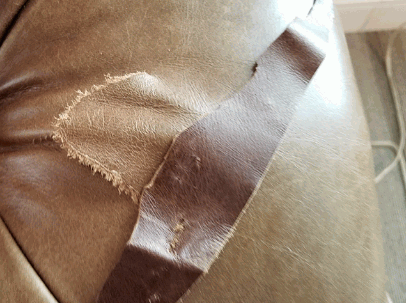
How To Protect Aniline Leather Sofa?
Protecting your aniline leather sofa is paramount for maintaining its beauty and durability, and it involves a combination of preventive measures and regular leather care practices. Applying a high-quality leather protection cream can help shield the leather from spills and stains, while a consistent application of leather conditioner nourishes the surface and keeps it supple. Additionally, incorporating leather maintenance tips into your cleaning routine ensures that your sofa remains in excellent condition for years to come.
Using A Leather Protector
Using a leather protector specifically designed for aniline leather is an effective way to guard against spills and stains while maintaining the natural beauty of the leather. This protective product creates a barrier that repels liquids, making it easier to clean up accidental spills before they soak in and cause damage. To achieve the best results, apply the leather protection cream according to the manufacturer's instructions and integrate this step into your regular leather care routine for optimal protection.
When considering leather care, various leather protection products are available, including sprays, creams, and waxes, each suited to different types of leather. It's crucial to select the right product to ensure compatibility with aniline leather's unique properties.
For long-lasting effectiveness, reapply the leather protector every 3 to 6 months, depending on usage and exposure to elements. Regular maintenance not only sustains the leather's appearance but also prolongs its lifespan.
- Sprays: Quick and easy application; ideal for larger surfaces.
- Creams: Deeply nourishes while providing a protective layer.
- Waxes: Offers excellent water resistance for specialty items.
By establishing a steadfast routine, one can effortlessly protect their cherished leather possessions from potential harm.

Avoiding Direct Sunlight
Avoiding direct sunlight is crucial for protecting your aniline leather sofa, as prolonged exposure can lead to fading, drying, and cracking of the leather. Positioning your sofa away from windows or using curtains can effectively reduce the amount of sunlight it receives, thereby preserving the rich color and texture of the leather. This simple yet effective strategy is an essential part of leather care that contributes to the longevity and aesthetic appeal of your furniture.
To further enhance your approach to leather maintenance, consider these practical tips:
- Use UV Filtering Window Films: Applying films to your windows can significantly block harmful UV rays.
- Regular Conditioning: Invest in high-quality leather conditioners, such as Chambers leather balsam, to keep the material supple and resistant to damage caused by environmental factors.
- Decorative Barriers: Use furniture screens or plant arrangements to create natural barriers that diffuse sunlight without compromising your interior design.
These steps not only protect the leather but also maintain its luxurious appeal over time, ensuring your precious investment remains in excellent condition.
Rotating Cushions
Rotating cushions on an aniline leather sofa is a highly effective method for ensuring even wear and extending the life of your upholstery.
By regularly changing the position of the cushions, you prevent certain areas from becoming overly compressed or faded due to regular use. This simple action reduces the risk of uneven wear, which can lead to a decline in both the durability and aesthetic appeal of the leather.
This practice, when coupled with proper leather care techniques, such as gentle cleaning and conditioning, can help maintain the texture and color vibrancy of your suite.
Consider implementing a schedule for cushion rotation, possibly every few months, to ensure that each section of your sofa receives equal attention.
Along with rotation, employing protective products like moisture repellents can significantly enhance the longevity of your furniture's surface, allowing you to enjoy its beauty for years to come.
Using A Leather Conditioner
Using a leather conditioner, specifically aniline cream, is essential for maintaining the soft, supple feel of aniline leather, protecting it from drying out and cracking over time. Regular application of a high-quality leather conditioner nourishes the leather and helps to preserve its natural beauty, ensuring that it remains conditioned and well-protected against potential damage. This should be an integral part of your leather care routine, ideally applied every three to six months, depending on usage and environmental conditions.
When selecting a conditioner, it's crucial to choose one specifically formulated for leather types; for instance, cream-based conditioners like Geist work well for aniline leather while oil-based options can benefit more durable varieties, such as nubuck suede. Before application, make sure the surface is clean and free from dust or dirt by following a thorough leather cleaning guide to ensure optimal absorption.
- First, perform a spot test in an inconspicuous area to check compatibility.
- Next, apply a small amount of conditioner using a soft, lint-free cloth, working in circular motions.
- Allow it to absorb for a few minutes before buffing it with a clean cloth to achieve a shine.
Incorporating these techniques into your routine not only enhances the appearance of leather but also prolongs its lifespan, making it a worthwhile investment.


